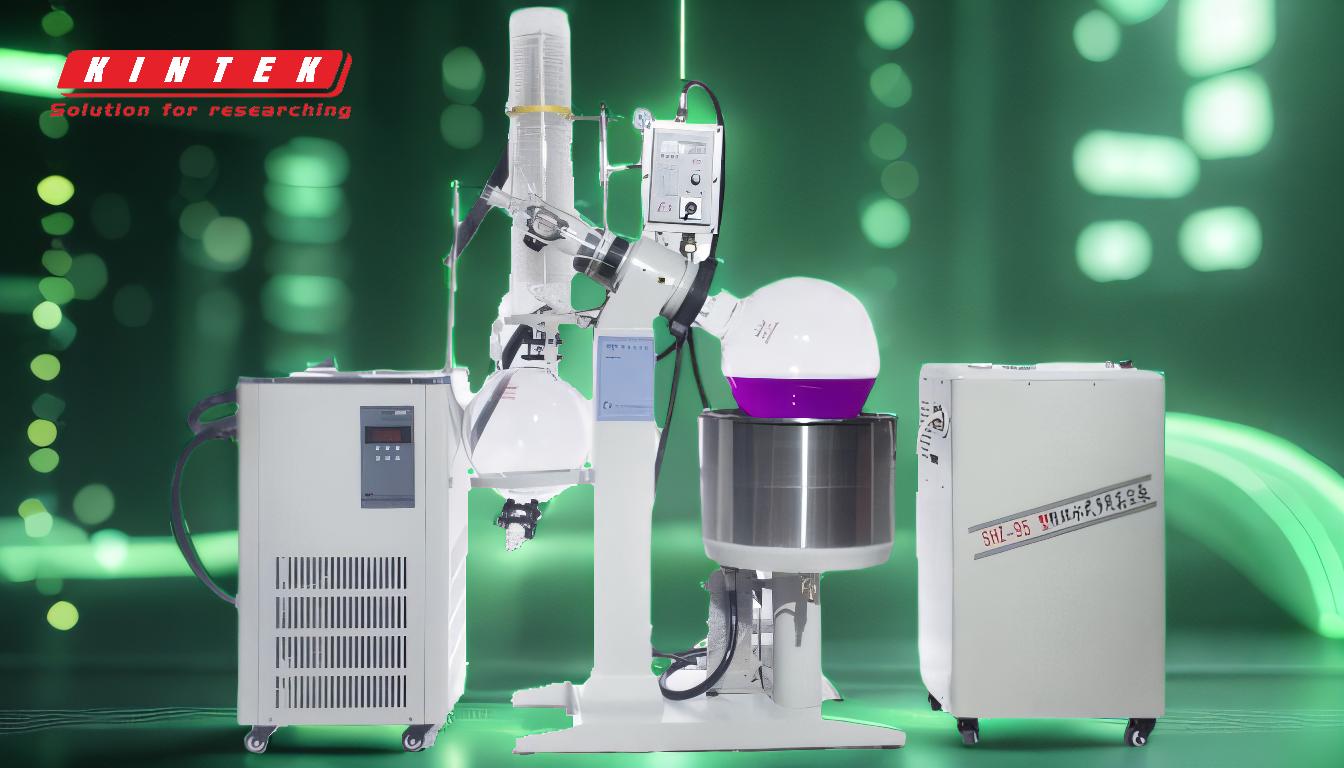A short path distillation unit is also referred to as a molecular distillation system. This technique is designed to separate mixtures based on differences in their volatilities under reduced pressure, allowing the distillate to travel a short distance. It is particularly useful for compounds that are unstable at high temperatures, as it enables lower boiling temperatures. The process involves heating the sample mixture, allowing its vapors to rise a short distance into a vertical condenser where they are cooled by water. This method is efficient for separating heavier molecules and is often used in industries requiring precise separation of complex mixtures.
Key Points Explained:

-
Alternative Names for Short Path Distillation Unit:
- Molecular Distillation System: This is the most common alternative name for a short path distillation unit. The term "molecular distillation" emphasizes the process's ability to separate molecules based on their volatilities under reduced pressure.
- Fractional Distillation: Although less commonly used, short path distillation is sometimes referred to as fractional distillation, particularly when the process involves separating materials from various compounds based on differences in their volatiles.
-
Process and Mechanism:
- Short Distance Travel: The defining characteristic of short path distillation is that the distillate travels only a short distance, typically just a few centimeters, throughout the apparatus. This minimizes the exposure of the distillate to high temperatures, making it ideal for heat-sensitive compounds.
- Reduced Pressure: The process operates under reduced pressure, which lowers the boiling points of the components in the mixture. This is crucial for preventing thermal degradation of sensitive compounds.
- Heating and Condensation: The sample mixture is heated, causing the more volatile components to vaporize. These vapors then travel a short distance to a vertical condenser, where they are cooled by water and condensed back into a liquid.
-
Applications and Advantages:
- Ideal for Heat-Sensitive Compounds: The ability to operate at lower temperatures makes short path distillation particularly suitable for compounds that are unstable at high temperatures, such as certain pharmaceuticals, essential oils, and organic compounds.
- Efficient Separation of Heavier Molecules: This method is highly effective for separating heavier molecules, which can be challenging to distill using traditional methods due to their high boiling points.
- Precision and Control: The short path distillation process offers precise control over the separation of complex mixtures, making it a valuable tool in industries requiring high purity and specificity.
-
Thermodynamic Separation Technology:
- Evaporation and Condensation: Short path distillation combines evaporation and condensation unit operations. It utilizes the differences in boiling points of components in a mixed liquid or liquid-solid mixture to separate them.
- Liquid-Liquid Separation: This technique is a form of liquid-liquid separation technology, where the evaporated components are condensed to achieve separation.
-
Operational Efficiency:
- Speed and Efficiency: The short distance traveled by the distillate and the reduced pressure environment contribute to faster and more efficient distillation processes. This is particularly beneficial in industrial settings where time and energy efficiency are critical.
In summary, a short path distillation unit, also known as a molecular distillation system, is a highly efficient and precise method for separating complex mixtures, especially those containing heat-sensitive compounds. Its ability to operate under reduced pressure and minimize the travel distance of the distillate makes it an invaluable tool in various industries.
Summary Table:
| Aspect | Details |
|---|---|
| Alternative Names | Molecular Distillation System, Fractional Distillation |
| Key Mechanism | Distillate travels a short distance under reduced pressure, minimizing thermal degradation. |
| Applications | Pharmaceuticals, essential oils, organic compounds, and other heat-sensitive materials. |
| Advantages | Precise separation, lower boiling temperatures, efficient for heavier molecules. |
| Operational Efficiency | Faster and energy-efficient due to reduced pressure and short travel distance. |
Need a short path distillation unit for your lab? Contact us today to learn more!










